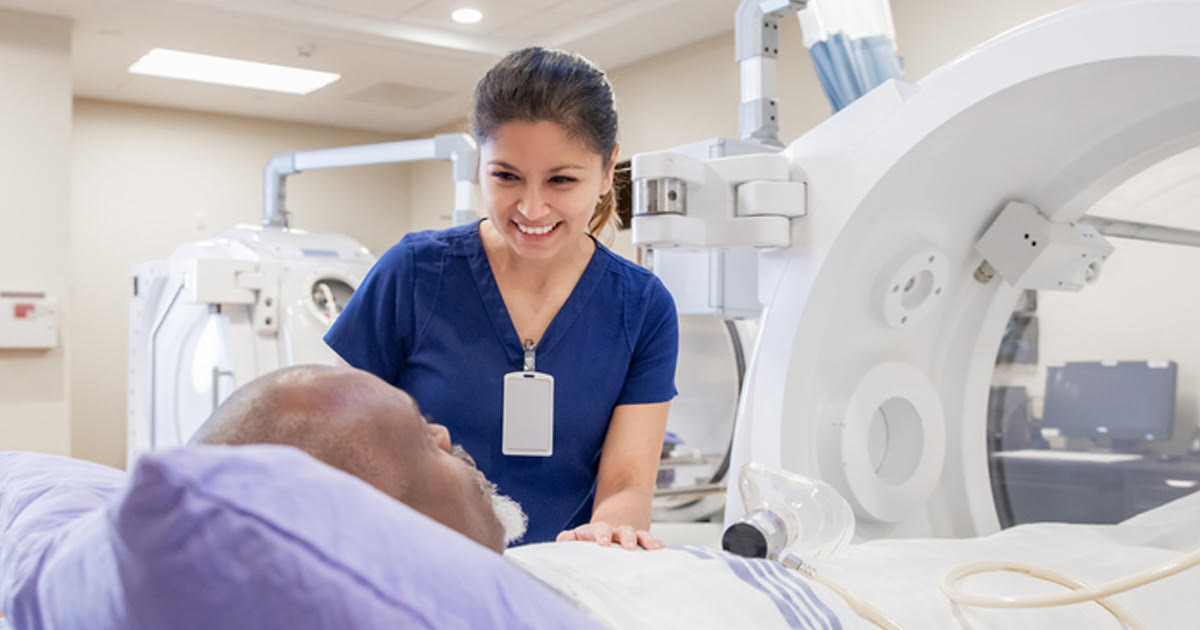
According to the American Cancer Society, more than 18 million people in the United States are living with some form of cancer, and over half of those will receive or have received radiation therapy as treatment. Radiation therapy is an effective treatment that can be used to treat almost all forms of cancer, and while advanced radiotherapy techniques have improved treatment precision and side effects, high doses of radiation used to kill cancer cells can still cause late-term effects for some people. That’s where hyperbaric oxygen therapy (HBOT) can help.
HBOT is a treatment used to enhance the body’s natural healing ability. The process includes exposing damaged tissue to 100% oxygen in a sealed chamber set at pressures greater than the ambient atmosphere, which creates new blood vessels, decrease inflammation and swelling, and ultimately helps the blood carry oxygen further and faster to the affected areas, making this an optimal treatment technique for radiation damage.
“I’ve seen patients who had radiation therapy treatment at some point in their life start having these late-term injuries and problems sprout up years or even decades later,” said Dr. Mark Jones, general surgeon and medical director for the McLaren Greater Lansing Wound Care Center. “We are able to use HBOT in order to target those sensitive areas by getting the needed blood oxygen to repair the damaged tissue.”
Tissue that is damaged by radiation may continue to break down over time and can lead to bleeding complications, hard-to-heal wounds, infections, bowel, and dental problems.
“While the radiation techniques that are available now provide much more precision and reduce the risk of affecting the surrounding healthy tissues and organs, it’s still possible for any kind of radiation exposure to have negative effects on the body over time, depending on the type and amount of cancer,” said Dr. Jones.
While every patient and treatment varies, Dr. Jones explained that most HBOT patients typically go through 40 sessions, each lasting about two hours, in the hyperbaric chamber to achieve results.
“At our wound clinic, we cater to what each patient needs and how his or her body reacts to the healing process,” said Dr. Jones. “If a patient needs more or less treatment, we can provide that for him or her to get the best results.”
HBOT can even be used as a pre-operative therapy before certain surgeries that patients may need to undergo after receiving radiation treatment.
“For patients who have more progressive bone or tissue damage that require surgery (such as skin grafts), we are able to use HBOT to increase the blood supply and we’ve found that doing so significantly improves those surgical outcomes,” said Dr. Jones.
Undergoing HBOT is a fairly easy process, with minimal side effects. Some patients may complain of ear popping, mild sinus discomfort, and claustrophobia. Serving the Lansing community for over 22 years, the McLaren Greater Lansing Wound Care and Hyperbaric Center focuses on patient safety and comfort and features a dedicated staff of specialized surgeons, all with extensive experience in treating and managing chronic wounds. In 2024, the wound care center received the Robert A. Warriner III, M.D., Clinical Excellence Award from Healogics, the nation’s largest provider of advanced wound care services, a testimony to the high quality and comprehensive care that staff and physicians provide to patients.
If you are interested in hyperbaric oxygen therapy, or want to learn whether you’re a candidate for treatment, call (517) 975-1500, or click here to learn more.
For more articles on health and wellness, click here.